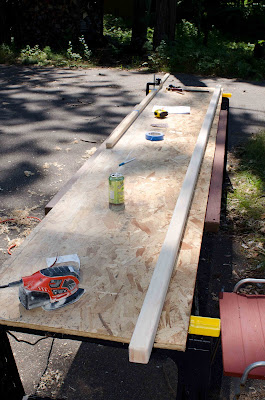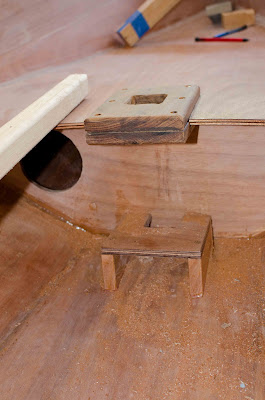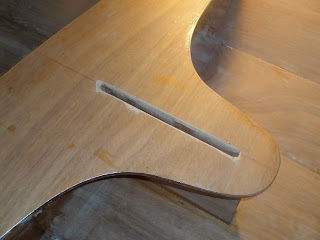I was really dreading installing the seats because of what I thought were some wide gaps between the seats (especially the aft seat) and the hull sides. I spent a lot of time trimming the seat supports and seat slots to try to minimize the gaps.
However, after weeks of agonizing over the issue, I found that mixing the fillet epoxy so it was really really thick was the answer. This helped to hold it in place in the wider gaps until it hardened. I got this trick off one of the online boat building forums, which are proving to be invaluable for the project. In this case, many cooks enhance the broth.
Next the boat was flipped over to make the fillets on the underside of the seats. With almost all the basic components in place the boat is now approaching its full weight and feels very stiff. Even though I didn't get as far in this project as I had hoped this year the impression of substance gives me a great feeling of satisfaction.
Shop lights keep things warm while the epoxy fillets cure. It's getting down to the freezing mark at night now. After about 24 hours of curing with the lights we had an 18 hour power outage due to the upper midwest "landicane". I think (hope) that the curing had progressed enough that the cool off didn't cause any major problems.
It's not even making it to 50 degrees F. during the day. My boat building season is drawing to a close.
So this is where things will end for the year, unless I order the sail kit and assemble some of it in the warmth of our Minneapolis townhome. Next up for the hull in the spring will be sanding the exterior.






























